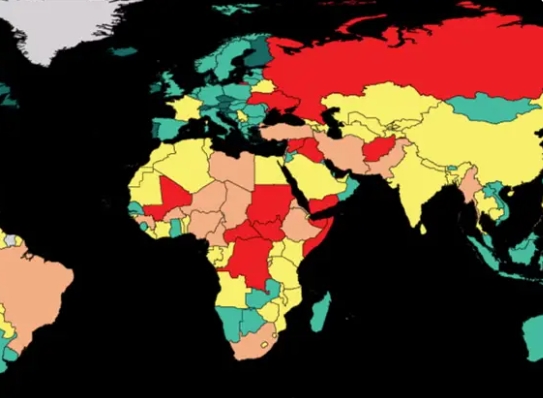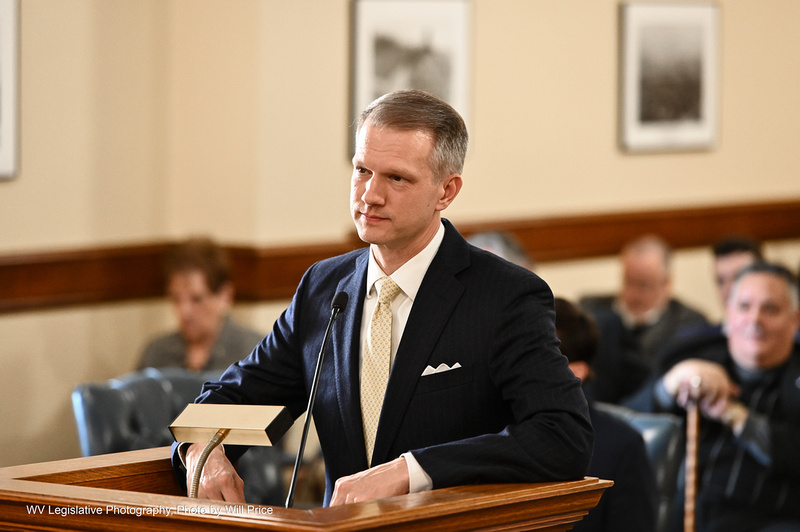Headline
Top 10 Most Dangerous Countries In The World 2024

The world’s most dangerous countries to visit in 2024 have been unveiled in a recent report by the Institute for Economics and Peace.
The report ranks 163 independent states and territories based on their level of peacefulness, covering 99.7% of the world’s population.
It also noted that there are currently 56 active conflicts, marking the highest number since the end of the Second World War, with fewer conflicts being resolved either militarily or through peace agreements.
Using the Global Peace Index (GPI), here are the top 10 most dangerous countries in the world in 2024.
Yemen
With a 2024 Global Peace Index (GPI) score of 3.397, Yemen remains one of the world’s most hazardous nations, with its catastrophic civil conflict since 2015 causing immense suffering and turmoil.
Yemen is grappling with widespread famine, disease, and infrastructure collapse amid a prolonged state of war. What began as an internal conflict has escalated due to the involvement of neighboring countries, each backing different factions, prolonging and intensifying the destructive nature of the conflict.
READ ALSO: Top 5 Cheapest Countries To Study In Europe
Sudan
Sudan is widely regarded as one of the world’s most dangerous countries, influenced by a variety of factors that severely affect its safety and stability.
Sudan’s instability stems primarily from the ongoing conflict in Darfur, alongside unrest in South Kordofan and Blue Nile districts. In 2024, these conflicts resulted in over 3,000 deaths and displaced nearly 2 million people, according to UN estimates. The humanitarian crisis is exacerbated by frequent attacks on civilians by government forces, opposition groups, and militias.
Also, according to the UN Office for the Coordination of Humanitarian Affairs (OCHA), about 14 million people need humanitarian aid.
South Sudan
South Sudan, with a 2024 Global Peace Index (GPI) score of 3.224, continues to rank among the world’s most dangerous nations due to ongoing civil conflict, ethnic violence, and political instability since gaining independence in 2011.
Afghanistan
Afghanistan is one of the most dangerous countries in the world, with a Global Peace Index (GPI) score of 3.448. The country has been experiencing ongoing violence for more than 40 years, making it a center of international concern.
READ ALSO: 7 Countries Who Recently Changed Their Names And Why
Decades of conflict have shaped Afghanistan into one of the most dangerous countries. The Taliban’s seizure of power in August 2021 has intensified instability, with heightened risks of terrorism, kidnappings, and widespread violence.
Ukraine
Ukraine has experienced the most significant decline in safety and stability, not only within its region but globally as well. This notable deterioration can be primarily attributed to the Russian invasion that began in February 2022.
By 2024, the conflict in Ukraine has claimed over 150,000 lives, including soldiers and civilians. More than 8 million Ukrainians have fled to neighboring countries, with an additional 7 million internally displaced, causing widespread destruction of cities and critical infrastructure like homes, schools, and hospitals.
Democratic Republic of Congo
The conflict in Congo has spanned more than four and a half years, has taken more lives than any other since World War II, and is the deadliest documented conflict in African history, according to the International Rescue Committee.
Russia
In 2024, Russia, with a Global Peace Index (GPI) score of 3.249, ranks among the world’s most hazardous nations, exacerbated by heightened geopolitical tensions stemming from the ongoing crisis in Ukraine.
READ ALSO: 10 Safest Countries In The World In 2024
Russia is grappling with internal challenges including organized crime and corruption, which undermine law and order, alongside escalating environmental concerns such as industrial accidents and pollution, posing significant health risks to the population.
Syria
Syria’s civil war, beginning in 2011, has resulted in a profoundly tragic and complex situation. The conflict has ravaged infrastructure, including buildings, roads, hospitals, and schools, severely impacting the daily lives of those remaining in Syria.
The humanitarian situation in Syria is dire, with over 13 million Syrians, including 6.6 million internally displaced, requiring humanitarian assistance, according to the UN.
More than half of the population faces food insecurity, and the healthcare system is in disarray, with many hospitals either destroyed or operating at minimal capacity.
Israel
The conflict between Israel and Hamas has escalated regional risks for Western travelers and exacerbated unrest-related dangers.
Mali
Mali has been in the grip of armed conflict since January 2012, when Tuareg rebels seized control of northern territory and subsequently declared the independent nation of Azawad by April of that year.
The situation escalated further with a military coup in March of 2012, intensifying the turmoil in the region.
VANGUARD
Headline
How Our Airstrikes Stopped Christmas Attacks In Nigeria — US Lawmaker

Riley Moore, a member of the United States House of Representatives from West Virginia’s 2nd District, has linked the absence of Christmas attacks in Nigeria this year to US military airstrikes carried out against Islamist militants on Christmas Day.
In a post on his official X account on Saturday, Moore contrasted the situation with the past two Christmas seasons, during which he claimed Christians were killed in attacks across parts of Nigeria.
The lawmaker noted that this year’s response targeted extremist groups instead of marking another period of violence.
READ ALSO:Rep Moore Confirms 12 Tomahawk Missiles Launched In Sokoto
He added that US forces acted decisively against militants in coordination with the Nigerian government.
“For the past two Christmases, Christians have been murdered in Nigeria. This year, thanks to @POTUS, Radical Islamic Terrorists were on the receiving end of 12 Tomahawk missiles as a present.
“The successful strikes on ISIS, in coordination with the Nigerian government, are just the first step to secure the country and end the slaughter of our brothers and sisters in Christ,” Moore wrote.
US President Donald Trump said on Thursday that American forces had conducted deadly strikes against Islamic State terrorists in north-western Nigeria.
Trump, who spoke via his Truth Social platform, warned that more attacks would follow if the militants continued killing Christians, adding that the Department of War executed numerous “perfect strikes.”
Headline
U.S. Lawmaker Reacts To Nigeria, U.S. Airstrikes

United States Congressman, Riley Moore, has stated that President Donald Trump is determined to put an end to the killing of Christians in Nigeria, warning that further action may follow if the violence persists.
Moore made the statement on Friday via his official X handle.
According to the lawmaker, the strike represents the first step in addressing what he described as the ongoing slaughter of Christians and the broader security crisis affecting Nigerians across religious and ethnic lines.
READ ALSO:US Dept Of War Shares Video Of Air Strikes In Nigeria
“President Trump has been clear that the killing of Christians in Nigeria must end,” he said.
He that the administration’s resolve on the matter should not be underestimated.
“As I stated at the outset: Do not test President Trump‘s resolved in this matter.
READ ALSO:JUST IN: US Forces Bomb Terrorists Camps In Nigeria
“Tonight’s strike in coordination with the Nigerian government is just the first step to ending the slaughter of Christians and the security crisis affecting all Nigerians,” he said.
He stressed that the operation signals a stronger stance by the United States in support of Nigeria’s efforts to tackle terrorism and violent extremism, noting that further measures could be taken if the situation does not improve.
Headline
US Dept Of War Shares Video Of Air Strikes In Nigeria

A video footage of the US military air strikes in Nigeria has emerged.
The video was released by the US Department of War following its air strikes against terrorists in Sokoto.
Earlier, the US secretary of War, Pete Hegseth had confirmed that military air strikes hit terrorists in Nigerians, saying it was deadly.
Later on, the US. African Command, confirmed that it conducted the attacks described as very deadly by President Donald Trump.
Trump said he was only keeping the promise he made earlier last month to strike the terrorists he believes are killing innocent Christians.
READ ALSO:JUST IN: US Forces Bomb Terrorists Camps In Nigeria
Although described as powerful and deadly, the casualty caused by the attack is yet to be released.
Explaining further, security expert, Brant Philip, said the strikes may have been launched “from the USS Paul Ignatius, using a Tomahawk missile.”
The Nigerian government through its ministry of foreign affairs has also confirmed that the strikes were successful.
Watch video here

 News5 days ago
News5 days agoPHOTOS: New Era In Furupagha-Ebijaw As Okpururu 1 Receives Staff Of Office

 News4 days ago
News4 days agoUBTH CMD Marks 120 Days In Office, Expresses Commitment To Providing Conducive Working Environment

 News4 days ago
News4 days agoFIRS Confirms NIN As Tax ID

 News5 days ago
News5 days agoOPINION: Gumi And His Terrorists

 News5 days ago
News5 days agoFG Declares Public Holidays For Christmas, New Year Celebrations

 News5 days ago
News5 days agoOPINION: Christmas And A Motherless Child

 Metro4 days ago
Metro4 days agoFintiri Pardons Man Sentenced To Death For ‘Killing Herdsman In Self-defence’, Others

 News3 days ago
News3 days agoJUST IN: Kano Lawmaker, Sarki Aliyu Daneji, Dies Hours After Colleague’s Passing

 News4 days ago
News4 days agoOPINION: My Man Of The Season

 News4 days ago
News4 days agoKWAM 1 Withdraws From Awujale Race, Ends Court Challenge






























